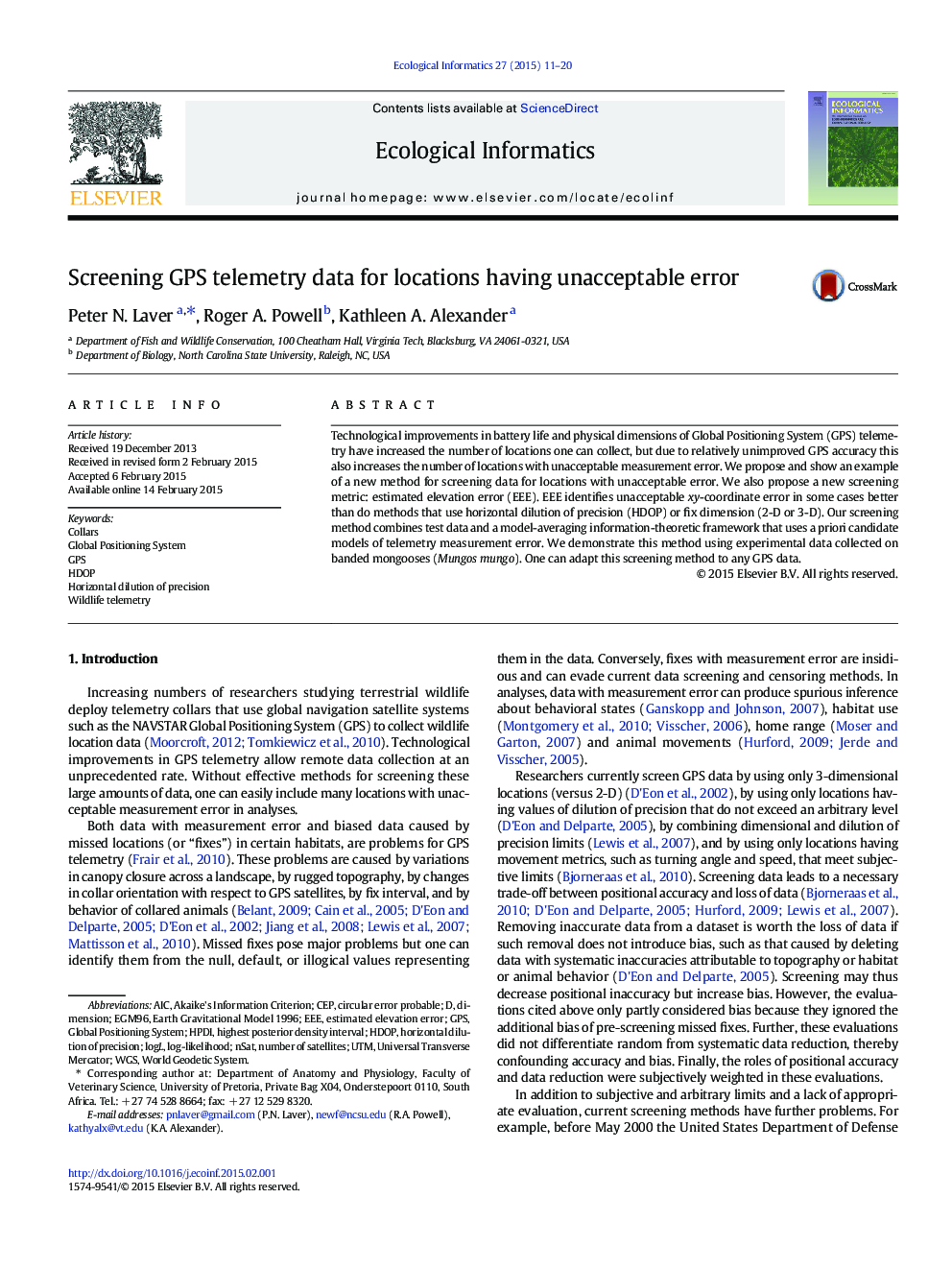| Article ID | Journal | Published Year | Pages | File Type |
|---|---|---|---|---|
| 6295935 | Ecological Informatics | 2015 | 10 Pages |
Abstract
Technological improvements in battery life and physical dimensions of Global Positioning System (GPS) telemetry have increased the number of locations one can collect, but due to relatively unimproved GPS accuracy this also increases the number of locations with unacceptable measurement error. We propose and show an example of a new method for screening data for locations with unacceptable error. We also propose a new screening metric: estimated elevation error (EEE). EEE identifies unacceptable xy-coordinate error in some cases better than do methods that use horizontal dilution of precision (HDOP) or fix dimension (2-D or 3-D). Our screening method combines test data and a model-averaging information-theoretic framework that uses a priori candidate models of telemetry measurement error. We demonstrate this method using experimental data collected on banded mongooses (Mungos mungo). One can adapt this screening method to any GPS data.
Keywords
Related Topics
Life Sciences
Agricultural and Biological Sciences
Ecology, Evolution, Behavior and Systematics
Authors
Peter N. Laver, Roger A. Powell, Kathleen A. Alexander,
